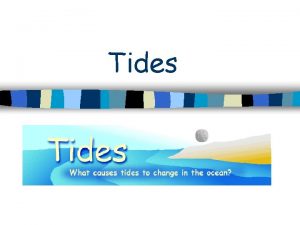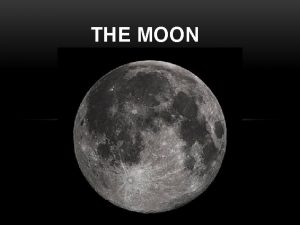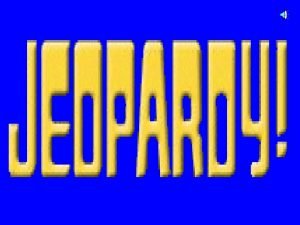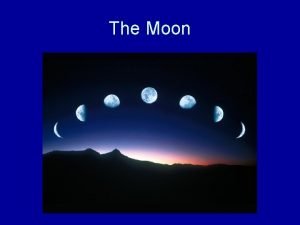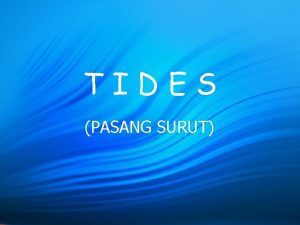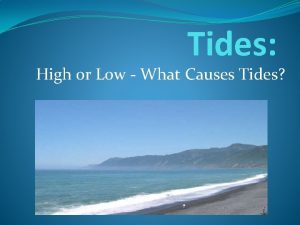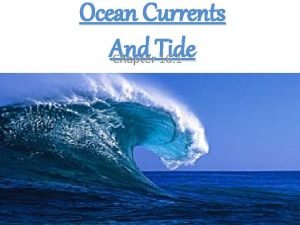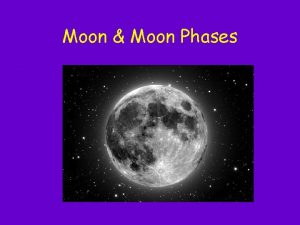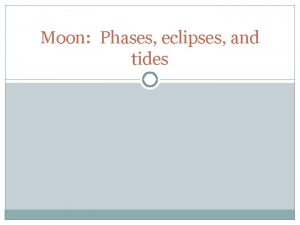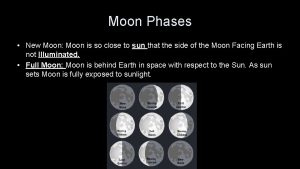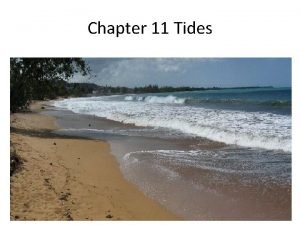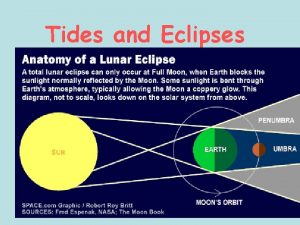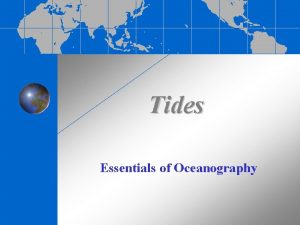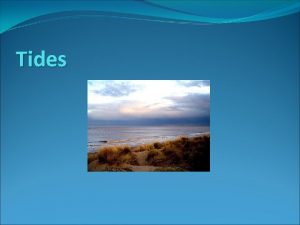Spring Tides very high high tides New Moon









- Slides: 9

Spring Tides (very high “high tides”) New Moon and Full Moon pg. 10 -23

Notes to add to slide 1 • Moon and Sun pull together to create a strong High tide • The moon has more tidal pull on the ocean the sun because it is closer to the earth • Waxing Moon is “growing” bigger each night and Waning moon is “shrinking” each night

Neap Tides (very low “high tides”) pg 10 -24

Notes to add to neap tide • Tidal pull of moon and sun work against each other to “negate” the affect of the other. • Sun-Earth-Moon are not aligned in a row but at a 90 degree from each other.

Bay of Fundi (over 50 feet difference!)

Write 4 bullet statements that summarize what you learned from these notes • •

Plankton Discussion • Zooplankton migrate every night in the open ocean. They stay in the deep water during the day and near the surface at night to feed on the Phytoplankton. • Plankton tend to bloom mid spring and again in the fall due to a nutrients abundance in the water at that time of the year due to upwelling. • Summer tends to see a fairly stable population size of plankton however when nutrients are in very large amounts Dinoflagellates can and do multiply to very high amounts causing Red Tides. (As many as 2 million per liter of water!)

Marine Biology Name Date Period Food Web/Plankton Homework Assignment Points 3 5 3 3 5 4 3 5 1 1 3 36 1. 2. 3. 4. 5. Agendas (11 total) Unit Vocab Sheet Pumpkin Disection Aquatic Ecosystems Colorpage Energy Pyramid Drawing, notes, & food web analysis 6. Population Size Practice Exercise 7. Phytoplankton Color page 8. MEFW Handout Questions 1 -10 9. Food Web Crossword Puzzle 10. Tides Notes 11. Symmetry notes and activity 32 -35 A 28 -31 B 24 -27 C 21 -23 D 20 and Below F 1. Points will be deducted for: No title (this sheet complete) -2 2. No grading scale -2 3. Wrong Order -2 4. Extra Papers -2

Study Guide for Ocean Ecology and Plankton unit (80 points) • 22 vocab matching (look at vocab sheet and crossword puzzle) • 15 questions from the Aquatic Ecosystems color page both notes and ID of regions in the ocean • 9 points from Phytoplankton Color page (ID and anatomy of parts) the anatomical parts colored • 5 Symmetry questions • 9 questions on Energy Pyramid and Chemosynthetic food webs activity questions and Symbiosis • 5 questions from Pumpkin Dissection • 6 questions from Readings from Textbook • 7 questions from Predator Prey and Populations handout • 2 Tide Questions
 The difference between spring tides and neap tides
The difference between spring tides and neap tides Smkvqmuzwv4 -site:youtube.com
Smkvqmuzwv4 -site:youtube.com Home.hiwaay.net/ krcool/astro/moon/moon tides/
Home.hiwaay.net/ krcool/astro/moon/moon tides/ What phase is this
What phase is this The science duo
The science duo Which moon phase occurs directly before a new moon
Which moon phase occurs directly before a new moon A person standing in the moon's penumbra will see a
A person standing in the moon's penumbra will see a Tides adalah
Tides adalah Tidal bulge
Tidal bulge Spring tide vs neap tide
Spring tide vs neap tide
